In a few short weeks, something will occur that hasn’t happened since 1995. On September 8th, at HasCon in Providence, Iconic Masters boosters will be opened, and every card within will be a surprise to every participant. Players will get to play with a set that won’t be released for over two months. At present, all we know is that the set features iconic cards and creature types from Magic’s past—making cards like [casthaven]Serra Angel[/casthaven] and [casthaven]Shivan Dragon[/casthaven] a near certainty.
Let’s give it some thought: what could be included in these boosters, and what should be within?
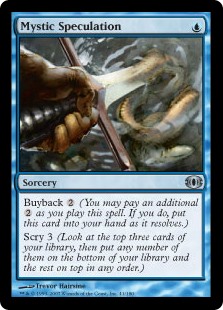
To consider what might be within Iconic Masters products, let’s consider the four preceding Masters products (Modern Masters 2013, 2015, & 2017, and Eternal Masters). All of them are premium sets containing only reprints. What made these products successful? How did we judge them?
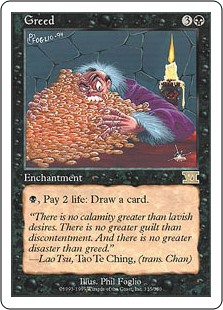
Value
Masters boosters have an MSRP of $10, so there has to be enough value in each booster pack to justify such a high cost. Modern Masters 2013 perhaps provided too much value, selling at well over its MSRP, while MMA2015 and EMA perhaps didn’t have enough money in them to justify their cost (and can still be acquired today at below MSRP).
It’s difficult for Wizards of the Coast to correctly gauge the state of the secondary market over a year in advance, in addition to the challenge of making sure that the box’s MSRP isn’t too high. (While Standard boosters have mostly self-correcting prices because they’re necessary for Standard, Masters boosters do not.) For Iconic Masters to do well, there have to be enough chase rares and uncommons (at the format’s onset) to merit people spending $30-$50 on a draft.
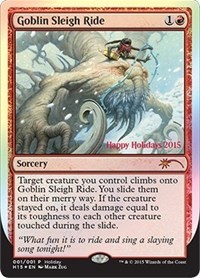
Fun
This may seem obvious, but Iconic Masters will be a better product if it’s fun. Masters boosters are designed to be drafted, and a well-crafted Limited format makes players more likely to spend their hard-earned cash on premium packs. Moreover, Masters products are drafted far less than than normal expansions, so while they don’t have to be as deep, they need to be really fun from the get-go.
Any number of factors can make a format more fun. Power can be fun, since there’s fun in strong cards. Balance is important, since a format consistently defined by certain bombs or archetypes is pretty solvable and one-note, Novelty is significant, as Masters formats enable cards to function in a way we’ve never/rarely seen before, as in EMA’s UR flashback deck. Nostalgia is critical, as Masters sets are all reprints, having so far excelled at showcasing cool themes and cards from the past), and having popular themes (such as tribal decks).
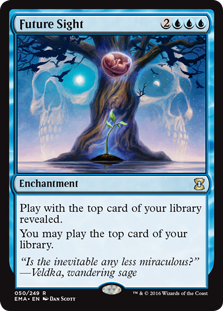
Where to Begin?
It may seem obvious that Masters products need to have value and be fun, but what sets them apart from expansions is that’s all they have to do. Amonkhet and Hour of Devastation also have to consider their impact on Standard. They have to be powerful enough to matter without being overpowered, interact with other sets without accidentally creating overpowered interactions, and bear the responsibility of introducing cards to all Constructed formats. Masters products have none of those restrictions, which frees up the designers to experiment; though with the aforementioned restrictions of only containing reprints and a premium price point.
The only thing we know for sure is that Iconic Masters will contain the five iconic creature types: Angels, Sphinxes, Demons, Dragons, and Hydras. These types are not created equally: Dragons and Angels have had entire expansions dedicated to them, Demons were removed from Magic for years, and Sphinxes and Hydras became iconic types only in the past decade or so. Such creatures tend to appear at higher rarities, making them difficult to downshift to common and potentially impossible to design archetypes around. There are zero cards which care about hydras and only one which cares about sphinxes (the extremely recent [casthaven]Unesh, Criosphinx Sovereign[/casthaven]). A tribal Sphinx or Hydra deck is likely impossible (or involves flexible lynchpins like [casthaven]Adaptive Automaton[/casthaven] and [casthaven]Brass Herald[/casthaven], while a tribal Dragon deck would be facile to implement.
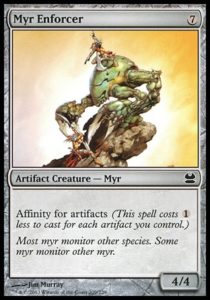
Theme
Masters products have never had a theme beyond “cards that are relevant in Modern/Eternal.” Iconic Masters has an even more nebulous theme, since there’s no specific format it’s trying to support or evoke. It is evocative of Magic as a whole (and moreover has to do this without treading on the toes of 2018’s Masters 25).
It’s hard to speculate just what elements of Magic’s past are sufficiently iconic that also haven’t been done before. We’ve seen most major tribes (except for Merfolk), we’ve seen many of Magic’s most iconic mechanics (Storm, Dredge) and archetypes (draw-go control, five color, skies, tokens).
Given how little we have to go on, let’s look at the themes of the previous Masters formats. (Note: MMA2017, as a tricolor format, is the only one which didn’t have clear themes for all ten color pairs).
- W/U: Affinity (MMA2013), Affinity (MMA2015), Skies (EMA), Blink (MMA2017)
- U/B: Faeries (MMA2013), Proliferate/Control (MMA2015), Reanimation (EMA), Draw-Go (MMA2017)
- B/R: Goblins (MMA2013), Bloodthirst (MMA2015), Aristocrats (EMA), Aristocrats/Aggro (MMA2017)
- R/G: Storm/Stompy (MMA2013), Five Color (MMA2015), Zoo (EMA), Stompy (MMA2017)
- G/W: Thallids (MMA2013), Tokens (MMA2015), Enchantress (EMA), Populate/Tokens (MMA2017)
- W/B: Rebels (MMA2013), Spirits (MMA2015), Flicker (EMA)
- U/R: Arcane/Storm (MMA2013), Elementals (MMA2015), [casthaven]Burning Vengeance[/casthaven] (EMA)
- B/G: Dredge (MMA2013), Aristocrats (MMA2015), Elves (EMA)
- R/W: Giants (MMA2013), Double Strike (MMA2015), Tokens (EMA)
- G/U: Five Color (MMA2013), Proliferate (MMA2015), Threshold (EMA)
Unsurprisingly, there’s a fair amount of repetition, particularly among popular and modular themes (tokens, graveyard interaction, tribal decks, and multicolor being chief among them).
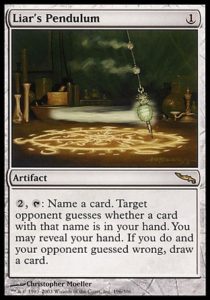
So, here’s my complete stab in the dark of what to expect from Iconic Masters based on only the previous masters sets and what little we know. These could also be reasonable guesses for 25th Anniversary Masters, which we know even less about but presumably has to abide the same rules as every other Masters product.
Merfolk
This is an easy one. Goblins, Elves, Spirits, Faeries, and even Giants have had their time in the sun. It’s time for Magic’s oldest tribe to get their turn. This could be a monoblue deck, in white-blue (with support from Lorwyn), or in blue-black (with more limited support from Shadowmoor).
Dragons
There pretty much must be a dragon deck. Sure, we’ve just seen a dragon Commander precon, but dragons are the most iconic iconic creature type. They could be in all five colors, or in any red pair (but I’d put my money on seeing some Kolaghan or Atarka dragons).
Mill
Mill is a popular, recurring mechanic. We’ve only ever seen it in Modern Masters 2013, where [casthaven]Mind Funeral[/casthaven] did relatively little and [casthaven]Dampen Thought[/casthaven] was an archetype staple. If it returns, it’ll almost certainly be in UB. [casthaven]Glimpse the Unthinkable[/casthaven] could definitely use a reprint.
(There’s a good argument for UB to be zombies, but we’ve seen a ton of zombies in the past year and having a mill subtheme means that [casthaven]Belltower Sphinx[/casthaven] can double as an enabler and iconic creature.)
Tokens
Every masters product has had at least one token theme, and I can’t imagine that this one will be an exception. I’ll guess it’ll be in RG, since we haven’t seen it in that color combination before and could be a welcome reprieve from RG being the color of aggressive 1-3 drops.
Lifegain
WB lifegain has become a theme in recent years, but plays nicely with clerics (a classic WB creature type) and angels like [casthaven]Angel of Mercy[/casthaven].
What won’t be there
I’ll furthermore guess that this will be the first Masters product without a five color deck. Every other one has had a strong multicolor green deck, with MMA2017 being defined by multicolor decks. I’d bet that there’s more support for being monocolor and a little less fixing than we’ve become accustomed to.
Also, no affinity. An artifact deck would be cool, but we had enough affinity in the first two Modern Masters to see it again quite this soon.
And that’s my stab in the dark. Here’s looking forward to being wrong (and perhaps a little bit right) at HasCon!
—Zachary Barash
Zachary Barash is a New York City-based game designer. He works for Kingdom Death: Monster, has an MFA in Game Design from NYU, and does freelance game design.
His favorite card of the month is [casthaven]Unconventional Tactics[/casthaven]. It’s rare to see humor like this in a card not featuring goblins, but it manages to succeed on several levels. [casthaven]Unconventional Tactics[/casthaven] manages to tell a silly, dark, and sad tale of mindless zombies who really want to serve jumping off a ramp. It’s a light, subtle, and poignant moment amid the dark background of Hour of Devastation. On the design side, it manages to revamp [casthaven]Angelic Blessing[/casthaven]—by giving it a tiny tribal theme, it suddenly becomes a weird card advantage/aggro engine. And it does all of that without you even needing to notice.

